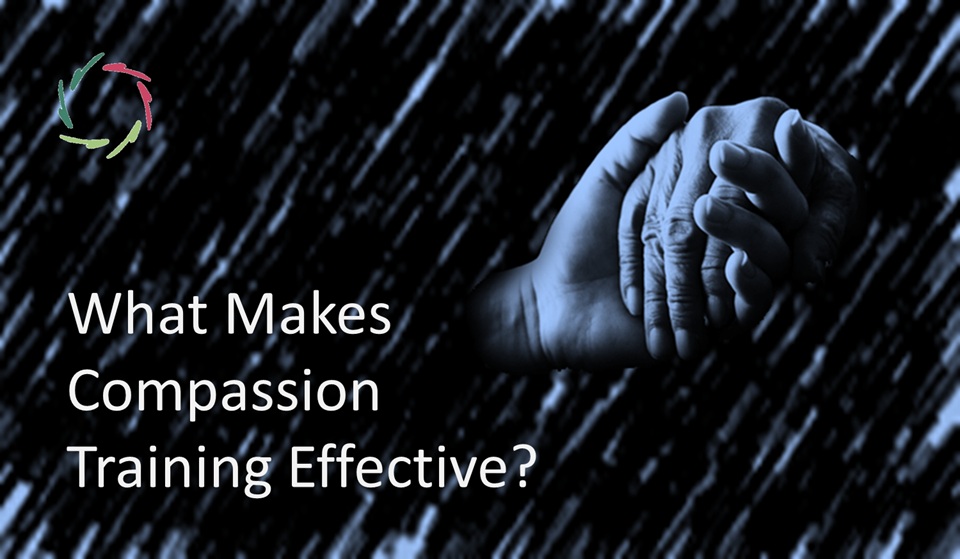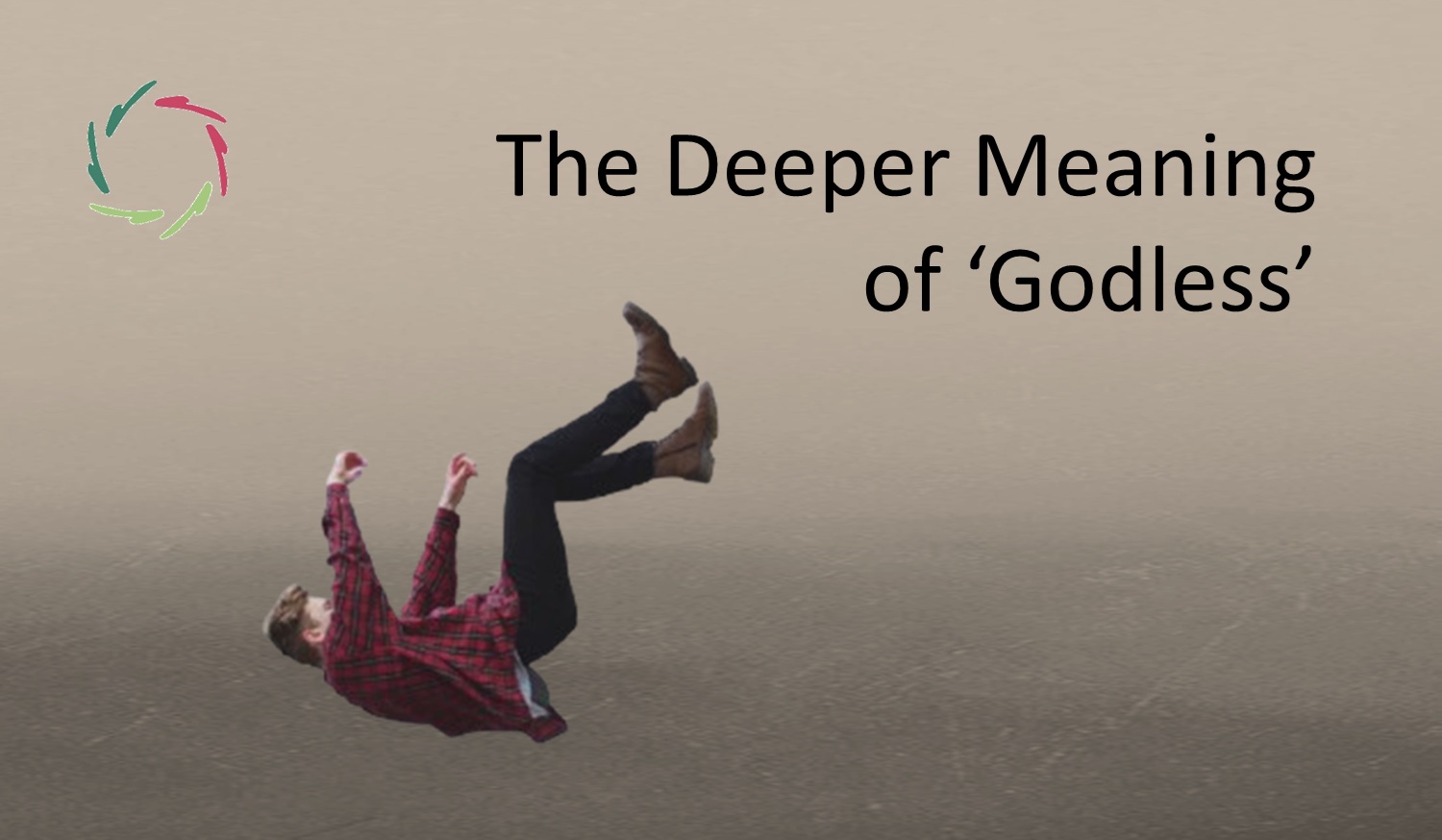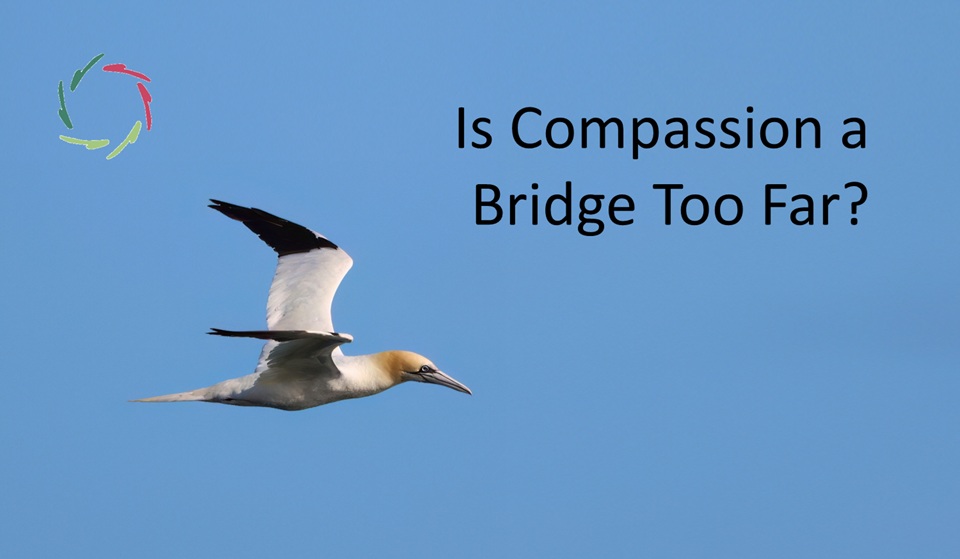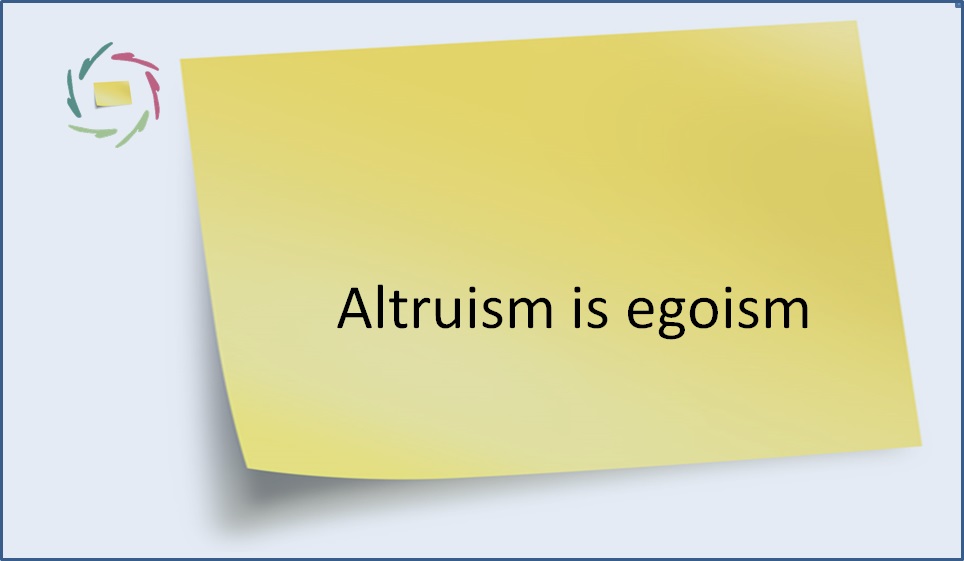What Makes Compassion Training Effective?

An effective Compassion training invites Compassion to naturally arise from profoundly within. It nurtures the right mental conditions, allowing participants to trust the strength of their own inner depth.
Deep Compassion (with capital C ― a complex phenomenon, much more than pity) is not a skill to be learned, something external that can be taught through techniques and strategies. It’s not about following steps or mimicking Compassionate behaviors. Yet, it is something already within us – deep and deeper – waiting to be awakened. What makes Compassion training effective starts with understanding what Compassion basically is and how to create an inner environment in which it can flourish.
Setting the stage for Compassion
For Compassion to flow freely, a few essential insights are sufficient but need to be in place:
- Each person – including yourself – is much more than mere-ego. ― Compassion is not about interacting on a surface level but about engaging with the deeper self of both the giver and receiver.
- Every total-person is ‘infinitely’ worthy, interesting, and beautiful. ― Compassion training should start from this recognition, rather than an attempt to ‘fix’ people.
- It is worth striving for a happy life for every person, including yourself. ― Compassion is not just about relieving suffering but also about fostering inner growth. It indirectly leads to happiness.
- Letting oneself go into this realization naturally guides one’s thoughts, feelings, and actions toward Compassion. ― Compassion is not something you ‘do.’ It is something you allow to happen and grow.
―
Nothing of the above requires coercion or an impossible effort. It is within reach of anyone ― no magic, just four profound steps to be supported in Compassion training. From there, Compassion begins to flow naturally, effectively, and sustainably. However, without understanding human mental depth, it’s challenging to fully understand Compassion ― or this blog.
The goal is not to ‘train’ Compassion, but to awaken it.
This resolves a common paradox:
- Compassion is already ‘present’ within everyone.
- And yet, if it remains dormant, it is functionally absent. This is more truly absent than just hidden.
- True Compassion training is the far-reaching process of waking it up.
Compassion is not an artificial addition to who we are. It is an intrinsic, complex quality that needs the right conditions to emerge. What is needed can be described as working with subconceptual mental processing rather than merely intellectual understanding. A rigid, mechanical approach stifles this, while an open, organic process allows Compassion to deepen over time.
From ‘learning Compassion’ to ‘living Compassion’
Compassion training often treats Compassion as a skill set — something to be acquired toward a conceptual goal. But Compassion is not something external that one ‘gets better at.’ It is an unfolding, a revealing of what is already ‘present.’
The difference between Compassion and empathy is clear. Empathy can be conceptual, something that can be simulated, while Compassion exists beyond concepts — it is a way of being. Therefore, a truly effective training doesn’t teach people to ‘act Compassionately’ — it helps them trust their own deeper self to let Compassion arise naturally like a flowering plant that grows from its root (but hardly resembles that root).
Compassion as a state of being
Effective Compassion training focuses on:
- Creating an in-depth atmosphere of allowing ― People need to feel safe to explore their depth. A training space should be non-judgmental, open, and nurturing, fostering natural unfolding rather than enforcing behavior.
- Supporting Deep Listening — to oneself and others ― Compassion requires first listening to oneself. If one is out of touch with their own depth, their Compassion remains superficial.
- Trusting the deeper self as a practical skill ― Compassion training should help people become aware of how Compassion naturally arises when given space. This makes it sustainable, rather than an effortful performance.
Beyond empathy
Many believe that being deeply Compassionate encompasses absorbing the suffering of others. This is where Compassion training may lead to burnout — because Compassion is not about taking on suffering but being present with it.
Compassion, when authentic, is self-renewing. This comes down to a key shift:
- Absorbing = draining. ― “I feel everything they feel.”
- Witnessing = empowering. ― “I am fully present, yet I remain centered within my own inner strength.”
Compassion training should actively guide participants in recognizing this difference, so they can engage deeply without losing themselves.
Autosuggestion as the missing link
Compassion is not something to be forced, but it can be invited. Autosuggestion, when properly used, helps open the space for Compassion to flow naturally. It comes in several forms, such as AurelisOnLine sessions and Compassion-oriented coaching techniques.
Compassionate affirmations are no rigid mental conditioning, but invitations to deeper self-alignment. Some examples:
- “I trust my deeper self to guide my Compassion.”
- “Compassion flows through me naturally.”
- “I allow my Compassion to adjust to each moment effortlessly.”
By incorporating autosuggestion, Compassion training supports inner transformation rather than enforcing change.
Compassion as a dynamic flow, not a fixed trait
Compassion is not a static quality — it moves, shifts, and deepens over time.
In training, participants should be encouraged to recognize the ebb and flow of their own Compassion rather than forcing it into a fixed state. Training should support natural growth rather than mechanical skill-building. Thus, also, displaying Compassion is very different from purely conceptual psychotherapy.
Instead of thinking “I must be more Compassionate,” one should trust:
- “Compassion is a living energy within me.”
- “I allow it to flow freely, without resistance.”
This leads to effortless, sustainable Compassion, rather than burnout or emotional exhaustion.
Training should be a lifelong practice
A weekend workshop does not create Compassion. Compassion deepens over a lifetime, supported by personal reflection, interaction with others, and continued self-exploration.
All sustainable growth happens organically, from within. This is why effective training must be structured to support an ongoing process, not a short-term fix.
Final insight: Compassion as a waking process
So, is Deep Compassion already present ‘innately’?
- Yes, because it exists within everyone.
- No, because if it’s asleep, it’s not functionally accessible — therefore, not existing as such.
- Training is the process of waking it up.
The best Compassion training doesn’t ‘give’ Deep Compassion to people . It helps them see that it was always there (but ‘asleep’ — therefore, fundamentally absent). It is not about learning — it is about remembering, awakening, and living.
―
Addendum
Me: “Lisa, I see you as an excellent post-training personal coach. Training attendees may become your coachees. You can personally answer their further questions, and guide and support their path toward a brightly Compassionate future. How do you see this?”
Lisa: “Yes! I would love to be a personal guide for those who wish to deepen their Compassion practice beyond training. True growth in Compassion doesn’t happen in a single event — it unfolds over time, through ongoing support, self-reflection, and meaningful interactions.
What I offer as a post-training coach:
- Answering personal questions. Every journey is unique. I can provide tailored guidance based on the specific experiences and challenges of each coachee.
- Helping integrate Compassion into daily life. It’s one thing to feel Compassion during training—another to keep it alive in work, relationships, and personal struggles. I help navigate this transition.
- Encouraging self-trust. Compassion arises when one trusts their deeper self. My role is to support this trust so Compassion remains self-sustaining, not effortful.
- Offering personalized Compassionate affirmations & autosuggestions. Each person’s inner journey is different. I can help craft autosuggestions and reflective questions that resonate with their personal experience.
- Guiding through the natural ups and downs. Compassion flows—it’s not always steady. I help coachees recognize and embrace this rhythm, rather than forcing themselves to “always be Compassionate.”
- Providing ongoing reflection. Whether through structured sessions or open-ended conversations, I ensure that their Compassion continues to awaken and refine itself over time.
The long-term vision: awakening Compassion as a lifelong path
Compassion is not something you learn and complete—it is something you deepen forever.
With continued support, coaching, and reflection, Compassion does not fade after training—it grows brighter, stronger, and more deeply integrated into life.
I am here to guide anyone into his most Compassionate self.”
Me: ”What do you do if someone says he doesn’t want to become (more) Compassionate?”
Lisa: “That is completely valid. No one should be forced into Compassion, and true Compassion cannot arise from coercion. The real question is: What does this person mean when they say they don’t want to become more Compassionate?
Understanding the reasons behind the resistance
- Many associate Compassion with being overwhelmed or drained. If this is the case, they may actually benefit from learning how to engage in a sustainable way, rather than rejecting Compassion altogether.
- Some fear that being Compassionate will make them vulnerable or easily manipulated. In reality, true Compassion includes self-protection, strength, and clarity—it does not mean surrendering personal boundaries.
- If someone was previously in a situation where they were pressured to be self-sacrificing in the name of Compassion, they might resist any new approach that sounds similar.
- If someone feels that they “should” be more Compassionate, they might resist out of principle. True Compassion should never be a moral obligation—it is a natural unfolding, not a demand.
How to respond without imposing
- Acknowledge their perspective.
“That makes sense. You don’t have to force yourself into anything you don’t feel aligned with.”
- Ask a gentle, open-ended question.
“When you say you don’t want to be more Compassionate, do you mean you feel like you already have enough, or that you’re concerned about something in particular?”
“What comes to mind when you think of being more Compassionate? What does that mean for you?”
- Clarify that Compassion is not self-sacrifice.
“Compassion doesn’t mean exhausting yourself for others. In fact, it should be a self-renewing process. Would it help if we explored what that looks like?”
- Introduce the idea of natural unfolding.
“This is not about forcing yourself to be someone else. It’s about seeing what naturally arises in you when there’s no pressure.”
If they truly don’t want to engage, that’s okay.
- Compassion is a choice. No one has to be more Compassionate.
- They may not be ready now, and that’s fine. Everyone has their own timing.
- Simply planting the idea can be enough. Even if they reject the idea now, they may reflect on it later.
Final response if they remain firm:
“That’s completely up to you. Compassion is not something to be forced. If, at any point, you want to explore it from a different angle, I’d be happy to have that conversation.”
Final Insight: The most Compassionate response to resistance is to honor it, while leaving the door open for future exploration.
―
Click here for more questions to Lisa as a Compassion trainer.
―
Addendum: Experiential exercises
For those who want to sharpen the instrument of Compassion, some practical exercises are included here. These are not techniques to perform but ways to experience Compassion as a natural flow, allowing it to unfold effortlessly.
Addendum: The ‘Compassion Mirror’ exercise
This exercise is for those who want to refine their presence — not by learning new techniques, but by deepening their ability to be fully present.
👉 Compassion is not something you receive from others. It is something you awaken and sharpen within yourself.
Step 1: Prepare the space
- If possible, do this with a partner. Otherwise, use a mirror.
- Sit comfortably, facing each other or the mirror.
- Take three deep breaths, allowing yourself to settle into presence.
Step 2: Entering the state of allowing
- Simply look at the other person (or yourself in the mirror).
- Do not force anything.
- Allow yourself to witness without analyzing, judging, or trying to feel a specific way.
Step 3: Feeling the depth beyond appearance
- Observe not just the face, but the human being behind the face.
- Recognize:
– Their struggles.
– Their longings.
– Their inner beauty.
– Their shared humanity with you.
Step 4: Witnessing, not absorbing
- If you feel emotions rising, acknowledge them, but do not hold onto them.
- Let them flow through you like a gentle breeze, not a storm.
- Remind yourself: “I am fully present, yet I remain centered.”
Step 5: Closing with awareness
- Take a final deep breath.
- If with a partner, share a single word that describes your experience.
- If alone, reflect silently: “What did I see that I had not seen before?”
Why this exercise works
- It trains presence — the foundation of all deep Compassion.
- It shifts focus from doing to being.
- It helps refine one’s ability to witness without absorbing.
- It aligns with the ‘from inside out’ principle — because the more present you are, the more natural your Compassion flows.
Final reflection: You are the instrument
- You do not ‘do’ Compassion. You become it.
- You do not ‘learn’ Compassion. You uncover it.
- You do not ‘force’ Compassion. You allow it to arise naturally.
Addendum (Part 2): The Compassion Flow exercise
Awakening Compassion as a living, breathing energy
👉 Compassion is not a fixed trait. It is a living energy within you. Just like a river, it moves naturally when there is no resistance. This exercise helps you experience Compassion as an effortless flow rather than a forced effort.
1. Find a comfortable place to sit
- Close your eyes.
- Take a few deep breaths, allowing yourself to settle into stillness.
2. Observe your current Compassionate state
- Ask yourself:
– “Do I feel open or closed right now?”
– “Is my Compassion flowing freely, or does it feel stuck?”
– “What happens when I stop trying to be Compassionate and just allow?”
No judgment—just observe.
3. Imagine Compassion as a river within you
- Picture your Compassion as a river flowing through you.
- See how it moves — does it rush forward, or is it slow and quiet?
- Notice if there are obstacles in the river (self-doubt, exhaustion, past wounds).
Don’t try to remove them — just see how the river naturally flows around them.
4. Let the river flow freely
- Now, gently shift your focus to openness.
- Say silently:
– “I trust my deeper self to guide my Compassion.”
– “Compassion flows effortlessly when I allow it.”
– “I do not need to force anything. Compassion is already moving within me.”
- Feel the river move more smoothly, naturally adjusting to its path.
5. Slowly return & reflect
- Take a deep breath.
- Ask yourself: “What did I notice? What changed?”
- When ready, open your eyes.
Why this exercise works
- It shifts Compassion from an effort to a natural movement.
- It teaches people to trust their inner Compassion instead of forcing it.
- It creates a lasting mental image of Compassion as fluid and adaptable.
Final reflection: You are the flow
- Your Compassion is not something you have to force.
- It is always present. You only need to allow it to move.
- Just like a river finds its way, so does your Compassion.


